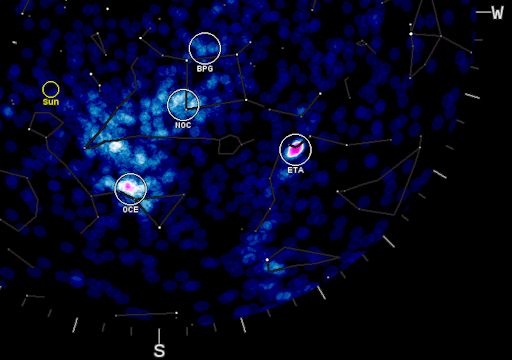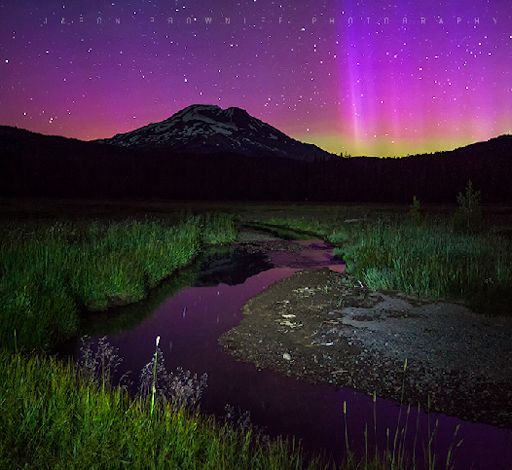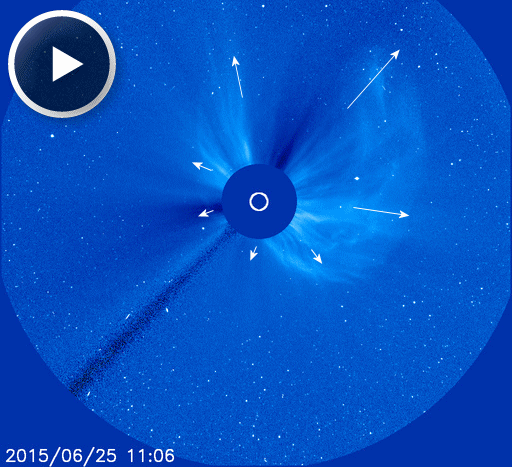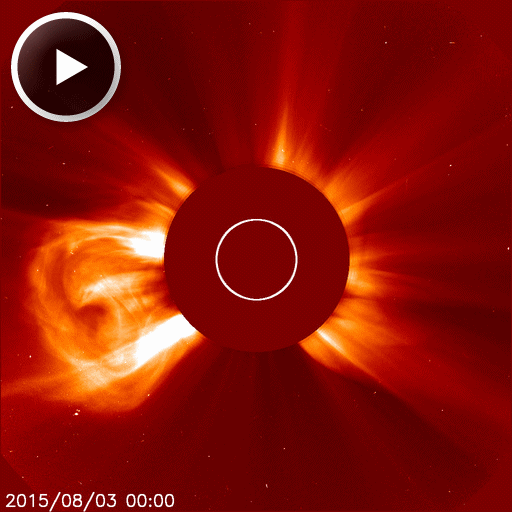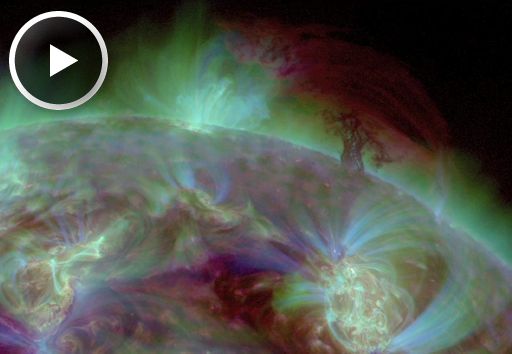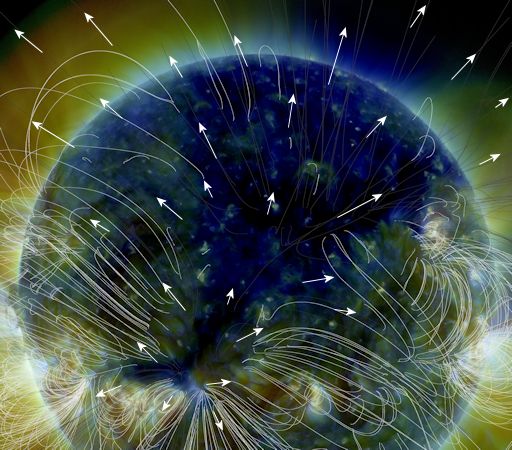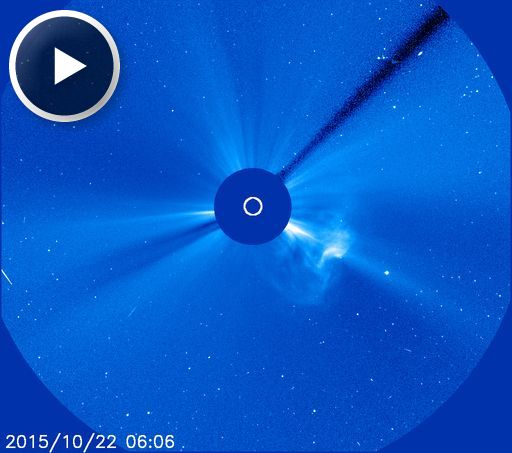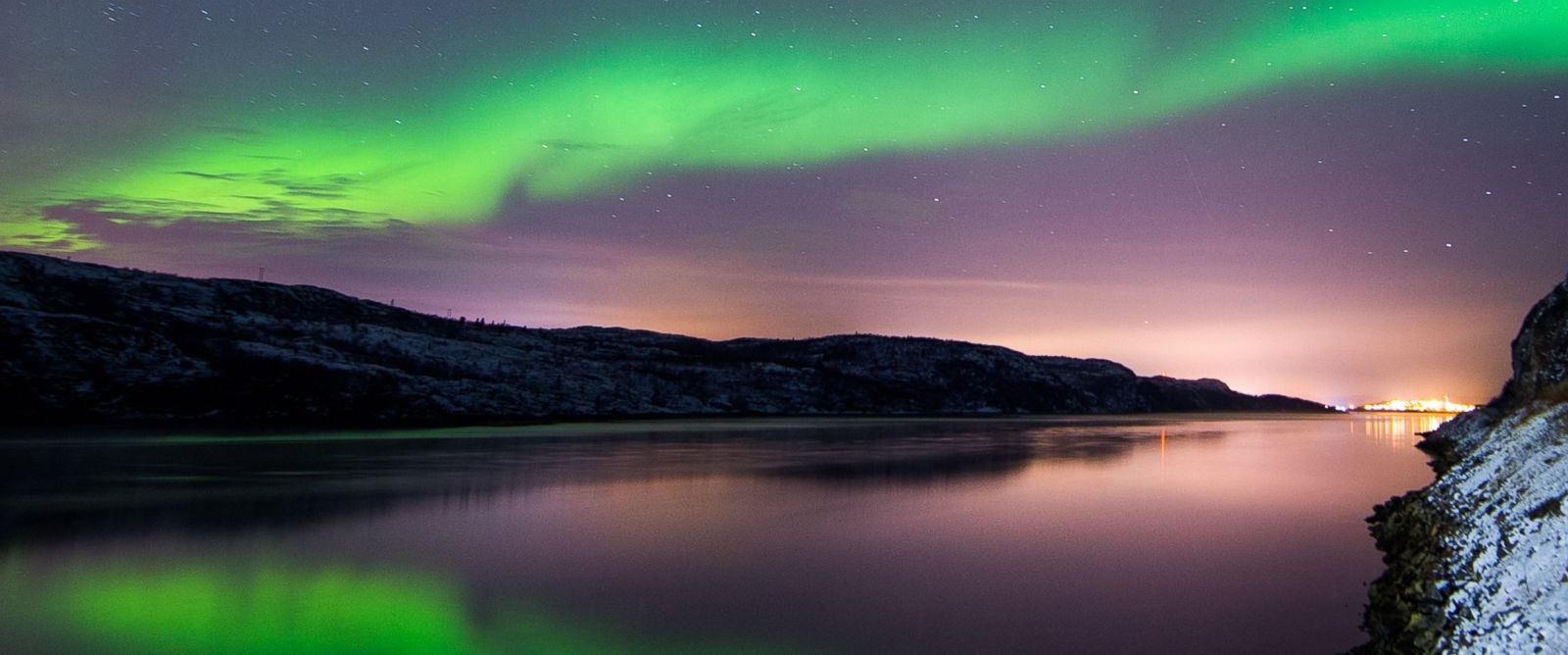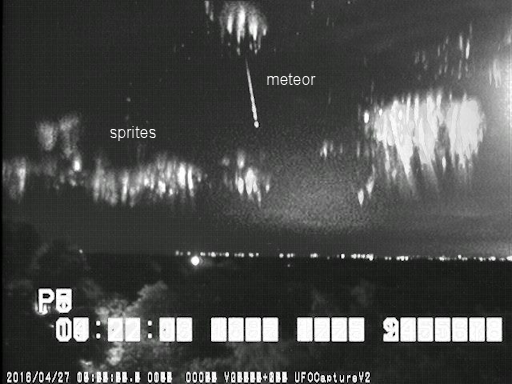Could the sun unleash a flare of such a magnitude that it dwarfs anything that humans have ever observed? Yes, says Kazunari Shibata, an astrophysicist from Kyoto University in Japan, and it could have incredible consequences.
At the recent Space Weather Workshop in Boulder, Colo., sponsored by the National Science Foundation, the National Oceanic and Atmospheric Administration (NOAA) and NASA, Shibata gave a sobering presentation on the possibility of “superflares,” solar flares that contain energy 1,000 times larger than what has been observed in modern times.
[How a solar storm two years ago nearly caused a catastrophe on Earth]
Solar flares are a common type of solar eruption, an explosive release of the magnetic energy concentrated in sunspots. Flares are an everyday occurrence – small ones – and can range in energy output over many orders of magnitude. The NOAA Space Weather Scales classifies flares by peak X-ray output on a 1-5 scale (R1-R5), with a flare rated “extreme” (R5) said to occur less than once a solar cycle. In this current cycle, no flare has exceeded the strong (R3) level.
Solar flares are known to cause blackouts of radio communications on the sunlit side of the Earth and disrupt radio navigation services. They provide the energy for a class of energetic particle acceleration that results in solar radiation storms that can disturb or damage satellites. They are also sometimes associated with geomagnetic storms that, if severe enough, can disturb the Earth’s electrical grid.
[Watch: Kilauea volcano lava explosion]
Shibata presented a statistical analysis suggesting a superflare, off-the-charts of our current classification system, should occur about once every 10,000 years. But how do we know if the record of satellite observations of flare energy go back only to the mid-1970s?
The answer lies outside our solar system.
The NASA Kepler mission, launched in 2009, has been looking for Earth-like planets orbiting other stars. Kepler has seen a lot of stars and has shown, through further analysis, that many have properties similar to our sun. In fact, scientists have observed over 80,000 such stars. Hiroyuki Maehara and colleagues published a study (Nature, 2012) that found — after painstakingly analyzing the Kepler observations over a period of 120 days — evidence for 365 “superflares” on these stars. These eruptions are thought to be physically similar to what our sun produces, drawing the energy from the magnetic field in sunspots.
Maehara’s work suggests that a superflare could occur every 800 to 5,000 years on Earth, Shibata said — which is more frequent than his statistical model predicts.
The largest known solar flare to affect Earth in the last 200 years occurred in 1859, known as the “Carrington” event, named after Richard Carrington, the astronomer who observed it. It produced auroras as far south as Cuba, El Salvador and Hawaii. A National Academy of Sciences study in 2008 said a similar event happening today could produce a devastating economic impact exceeding $2 trillion — largely because of damage to the electrical grid and satellite systems.
One wonders about the impact of a superflare — more powerful than the Carrington event — on Earth today given the technologies we rely on, and their vulnerabilities.
[Are we ready yet for potentially disastrous impacts of space weather?]
When Lord Carrington observed through an eyepiece the big flare in 1859, who knew of the satellite, power grid, time and frequency standard, even airline issues that we face now? An off-the-charts flare up to 1,000 times larger than the largest seen in our lifetimes — blowing the top off the NOAA scale — make this a scary question….
The author, Joe Kunches, is director of Space Weather Services at Atmospheric and Space Technology Research Associates (ASTRA), based in Boulder, Colo. Kunches was a former lead forecaster and operations chief at NOAA’s Space Weather Prediction Center.
